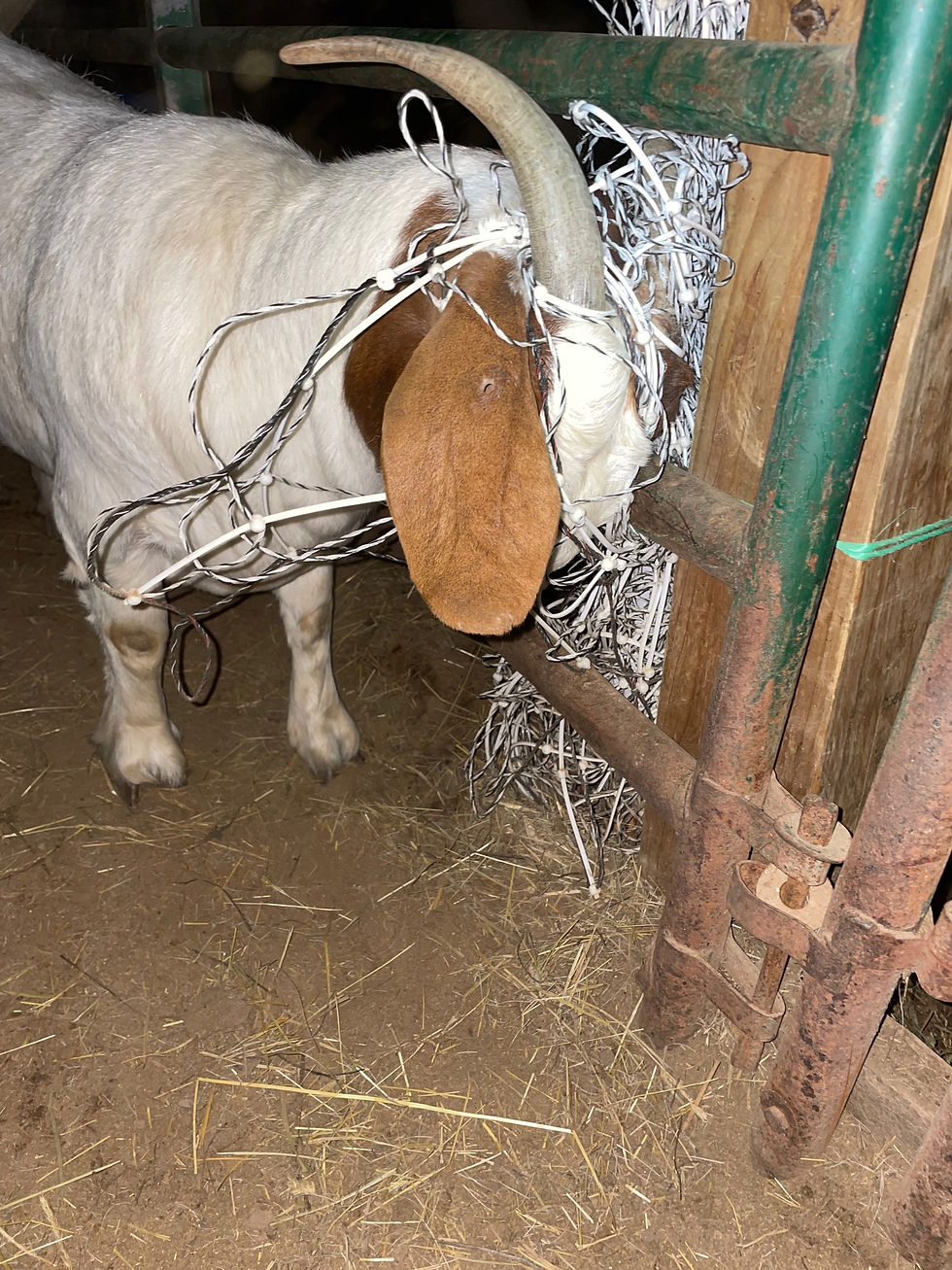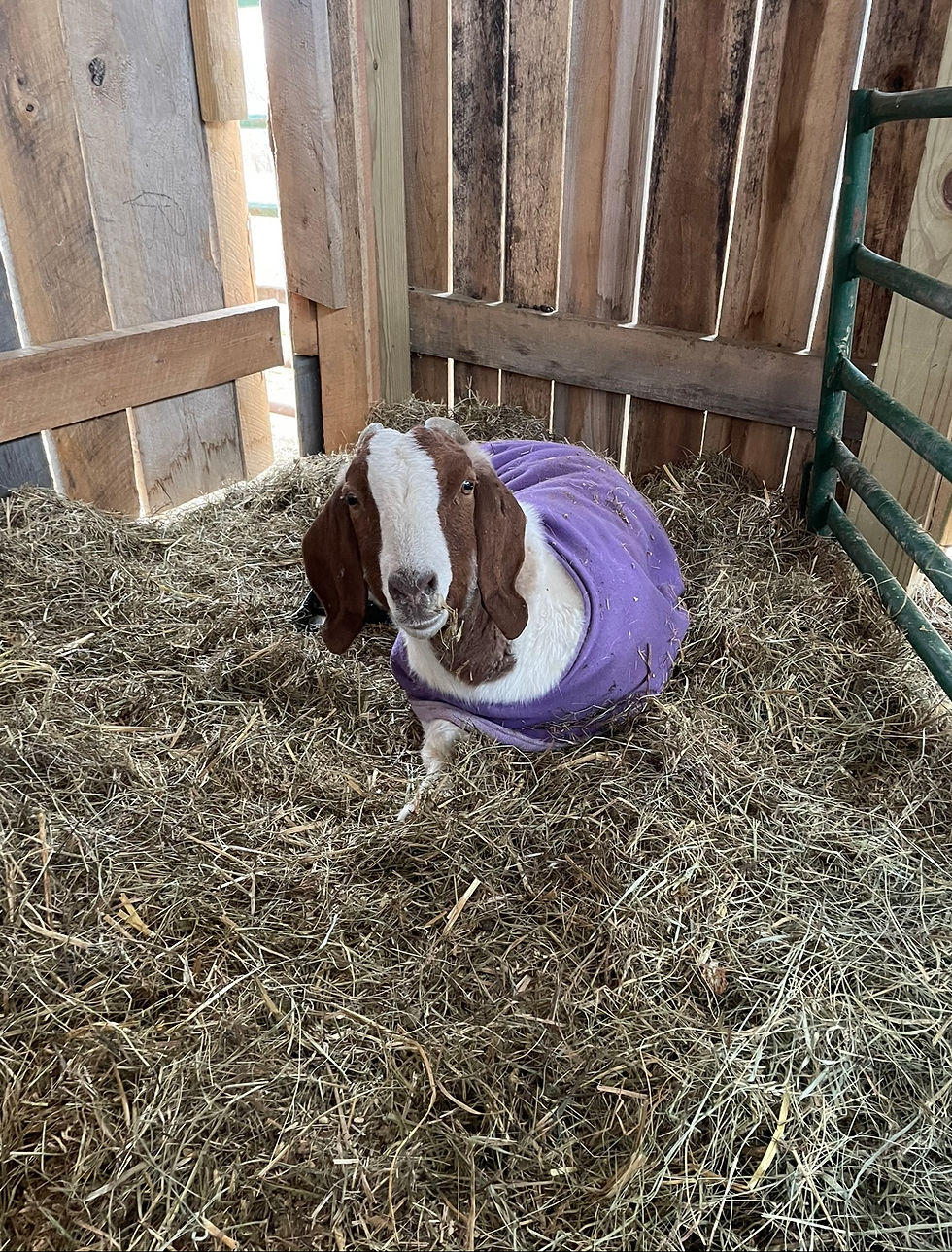Howdy Pasture Patrons!
I have decided that this year I will be doing monthly blog posts where I give more than just updates on my herd and business. I want to give you all, our amazing subscribers, all the information I can from what I have learned through the years of having goats.
Let me start this series by saying what works for my herd, and my farm, may not work for yours, and that is totally okay! I would also like to reiterate that I am not and have never claimed to be a “professional goat farmer” or a medical professional in any way. Any tips I am going to share with you all are based on my own experiences and my own research I have conducted. I encourage you to do your own research as well!
All of that said, let’s get into this month’s topic and if you have any questions, leave them in the comments, send me an email, or message me on socials- @pastureskiss on Instagram and Facebook. Alright, let’s get into it!
Keeping The Herd In/ Fencing
The main concern I hear from people considering adding goats to their homestead is that they are too hard to keep in. I tend to think this is more of an excuse and let me tell you why.
Goats can be difficult to pen, but they are 100% worth it, in my opinion. Now depending on your reasoning behind adding goats to your barnyard, or the breed you are looking into getting (we will do a whole post on breeds and their best attributes later this year) will depend on the kind of fencing, gates, and supplies you will need.
For example, our Boers (meat goats) stayed in a regular four board fenced lot for years before we moved them to a larger pasture with a four board fence and netting which is also perfect for the Alpines and Nigerian Dwarf goats (dairy breeds). Part of our fence is also woven wire and they have no problems with it.
The main thing I worry about with the goats are their horns getting stuck in wire fencing, so we have been dehorning all of our kids for the past few years to avoid those kinds of issues, but some of our broods still have large horns and -knock on wood- they seem to be pretty mindful of their horns and know where not to stick their head. Dehorning is a decision you have to make on your own, but we find that there are more cons than pros when it comes to horns on our goats.
Now, let me be honest, we have had goats that are just sneaky little buttheads… still love them but, yeah, they outsmarted me a few times. (Rose, I’m looking at you) What did they do, you ask? Well, when they were itty bitty teeny little baby kids, they taught themselves how to slip through the bars of the gates in the barn. We just had to put grid wire panels up when this happened, but then it made feeding them inconvenient. We also had a teaser buck that we borrowed from a friend that would literally climb up the gates and hop down, out of his pen. So, yes, in these instances, I can understand why you would think it was hard to keep them in. But, there is always a solution!
For kidding season, we now use all wire paneling for the Boers and Alpines or gates with smaller slots for the Nigerian Dwarf goats, which works perfect for the kids, and the mamas don’t mind it. Once they are weaned, the group goes into a growing pen that is mostly wire paneling. Then, once they are big enough, we will put them into a regular pen and since they hadn’t learned how to escape it, they generally won’t. Wire paneling has truly been a lifesaver in keeping them in the barn.
Let’s talk about electric fencing. Personally, I do not like it. My mom, her parents and her siblings all swear by it and I know plenty of people that have success with it, but I’m just so much of a worry worm when it comes to the goats that if I can avoid it, I will.
We had to split the pasture a few months ago to put some of my sister’s calves in the other half of the pasture so they could eat the grass down. We had a really nice, reputable fence netting and a super nice electric box from Premier 1 (not sponsored, but a great company. We get lots of stuff from there) but I was still so nervous about it.
Did we have any issues with the fencing? Yes, but they were avoidable. The electric box was placed in a shady area, causing the voltage to be too low for the goats, however they still respected the fence that was stretched throughout the pasture, but we had issues with the extra netting.
Pictured below: Rose being nosy resulted in her getting stuck. She was totally fine, but we could have avoided this by putting the extra netting on the calf side where they wouldn’t have bothered it and we wouldn’t have had to worry about horns. This was also a result of the voltage being too low, which again, was avoidable.

In conclusion, the issues were results of simple mistakes and sometimes it just takes a bit of experimenting to see what will work for your herd. This is just what works for mine. 🙂
Keeping The Herd Warm/ Winterizing
When it comes to keeping goats warm, it really isn’t super difficult. Their hair grows out for winter, giving them a fluffy winter coat, and it’s so cute. That being said, they can regulate their body temperatures pretty well, but it is still important that you do what you can to ensure they stay warm and healthy.
When winter hits, a roof and walls are important to have. Even if it is a run-in shed, that is better than them just having to deal with the elements. We open our barn up to the goats that normally would only have the lean-to, that way they can come all the way in and have fresh bedding.
We had a large storm come through in December that consisted of high winds, snow, and ice. I prepared by putting tarps up around the Nigerian Dwarf pen (pictured) and we also had my grandpa move some round bales around their pen to help block wind. This worked amazing, especially since my zip ties didn’t hold on one corner of my tarp, but just the tarp (secured) would have been perfectly fine as well.

We opened the barn for the Boers and Alpine, as mentioned and put multiple layers of bedding down in all the pens. We also expanded their pen so they could all fit in the barn with no issues, then I locked them in to keep as much wind out as possible (pictured). Looking back, I wish I would have put plastic up around the outside of the barn to keep the snow out. The goats were still fine and there was plenty of dry area for them, so it was okay, but the snow was coming in from all directions so it would’ve been helpful.

When we knew this storm was coming, we also filled the hay loft and filled our feed barrels. I also collected buckets and gave the goats fresh water and used the other buckets to carry out warm water when their waters froze. Pro tip: only fill the buckets/tubs halfway the night before, that way if the water freezes completely solid, you can pour fresh water on top! I am planning on investing in some water heaters but since we don’t currently have electricity in the barns, it was going to be more of a hassle than a help.
A couple more things you can do, if you really think they are too cold, is put blankets on them or give them a heat lamp. The coats can be the simple slips made for show goats, but my favorite is the “Sheep and Goat Underblanket” from Weaver Livestock brand. (Pictured on our sweet Kisses). The best heat lamps you can get are from Premier 1. The risk with heat lamps is the electricity going out and if your goats are nosy like mine, you have to put them out of their reach.

That covers it! Am I missing anything on this topic? Let me know!
If you have read this far, thank you! And if you think goats are high maintenance, they can be, but there are always ways to make things easier when it comes to goats. Be on the lookout for next month's blog: Kidding Season Tips! Make sure you subscribe so you don’t miss it!
Loved reading this - excited for more blog posts!
That day was so cold on the farm! It was -9° Fahrenheit. Good job keeping them warm❤️